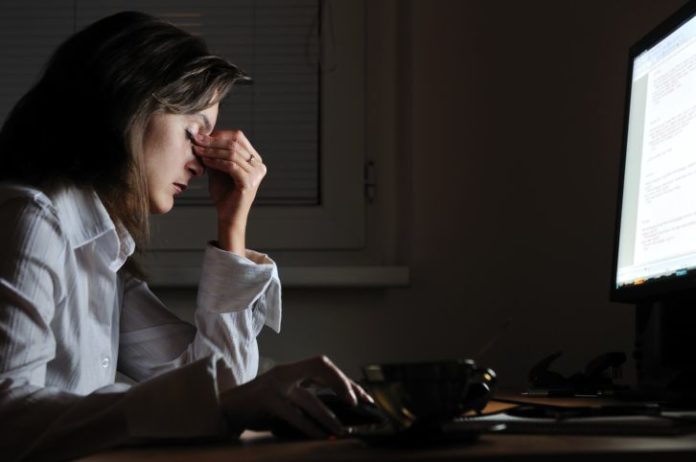For most of history, humans rose with the sun and slept when it set. Enter Thomas Edison, and with a flick of a switch, night became day, enabling us to work, play, and post cat and kid photos on Facebook into the wee hours.
However, according to a new study led by a Johns Hopkins biologist, this typical 21st- century scenario comes at a serious cost: When people routinely burn the midnight oil, they risk suffering depression and learning issues, and not only because of lack of sleep. The culprit could also be exposure to bright light at night from lamps, computers, and even iPads.
“Basically, what we found is that chronic exposure to bright light—even the kind of light you experience in your own living room at home or in the workplace at night if you are a shift worker—elevates levels of a certain stress hormone in the body, which results in depression and lowers cognitive function,” said Samer Hattar, a biology professor in the Krieger School of Arts and Sciences.
The study, published in the Nov. 14 Advance Online Publication of the journal Nature, used mice to demonstrate how special cells in the eye (called intrinsically photosensitive retinal ganglion cells, or ipRGCs) are activated by bright light, affecting the brain’s center for mood, memory, and learning.
“Mice and humans are actually very much alike in many ways, and one is that they have these ipRGCs in their eyes, which affect them the same way,” Hattar said. “In addition, in this study, we make reference to previous studies on humans, which show that light does, indeed, impact the human brain’s limbic system. And the same pathways are in place in mice.”
The scientists knew that shorter days in the winter cause some people to develop a form of depression known as “Seasonal Affective Disorder,” and that some patients with this mood disorder benefit from “light therapy,” which is simple, regular exposure to bright light.
Hattar’s team, led by graduate students Tara LeGates and Cara Altimus, posited that mice would react the same way, and tested their theory by exposing laboratory rodents to a cycle consisting of 3.5 hours of light and then 3.5 hours of darkness. Previous studies using this cycle showed that it did not disrupt the mice’s sleep cycles, but Hattar’s team found that it did cause the animals to develop depression-like behaviors.
“Of course, you can’t ask mice how they feel, but we did see an increase in depression-like behaviors, including a lack of interest in sugar or pleasure seeking, and the study mice moved around far less during some of the tests we did,” he said. “They also clearly did not learn as quickly, or remember tasks as well. They were not as interested in novel objects as were mice on a regular light-darkness cycle schedule.”
The animals also had increased levels of cortisol, a stress hormone, which has been linked in numerous previous studies with learning issues. Treatment with Prozac, a commonly prescribed anti-depressant, mitigated the symptoms, restoring the mice to their previous healthy moods and levels of learning, and bolstering the case that their learning issues were caused by depression.
According to Hattar, the results indicate that humans should be wary of the kind of prolonged, regular exposure to bright light at night that is routine in most of our lives, because it may be having a negative effect on our mood and our ability to learn.
“I’m not saying we have to sit in complete darkness at night, but I do recommend that we should switch on fewer lamps, and stick to less intense light bulbs,” he said. “Basically, only use what you need to see. That won’t likely be enough to activate those ipRGCs that affect mood.”
Source: Johns Hopkins news network










